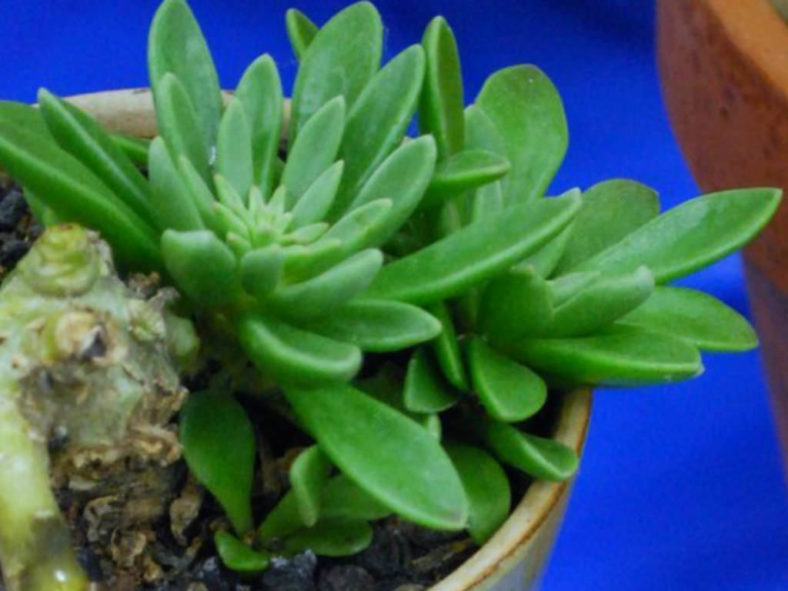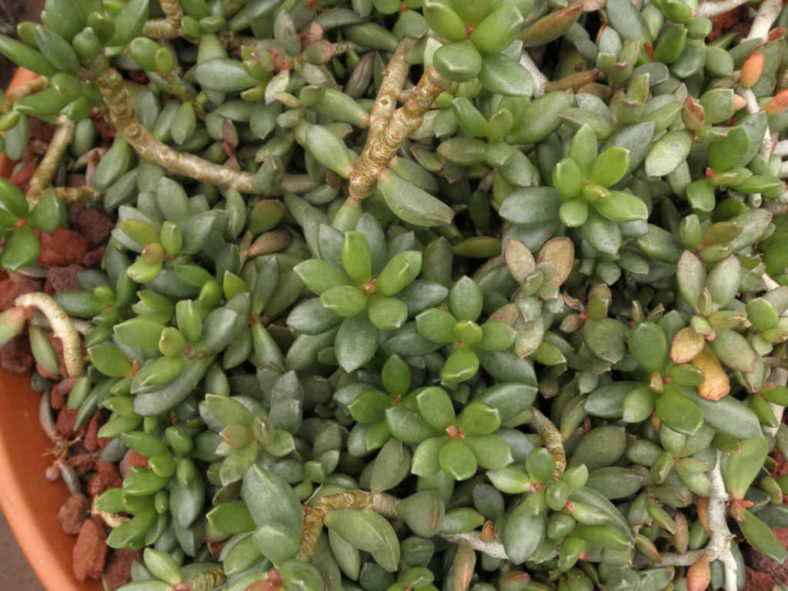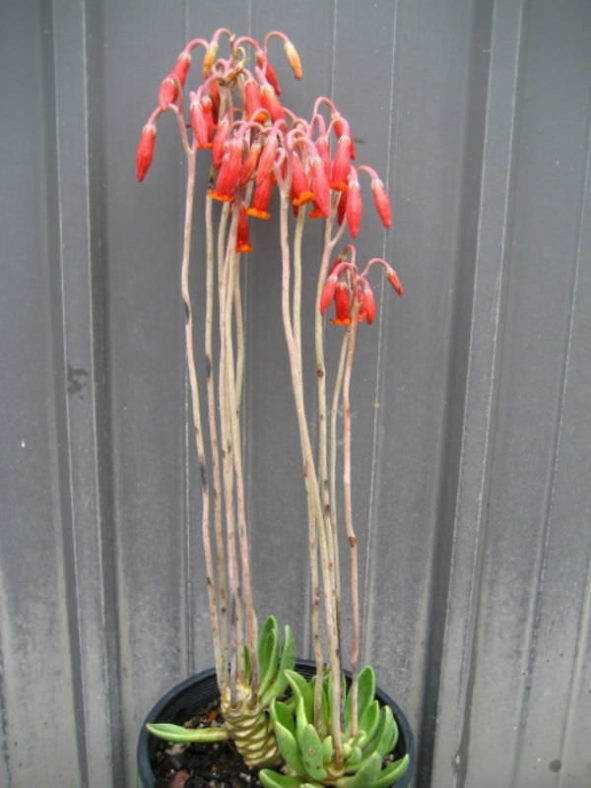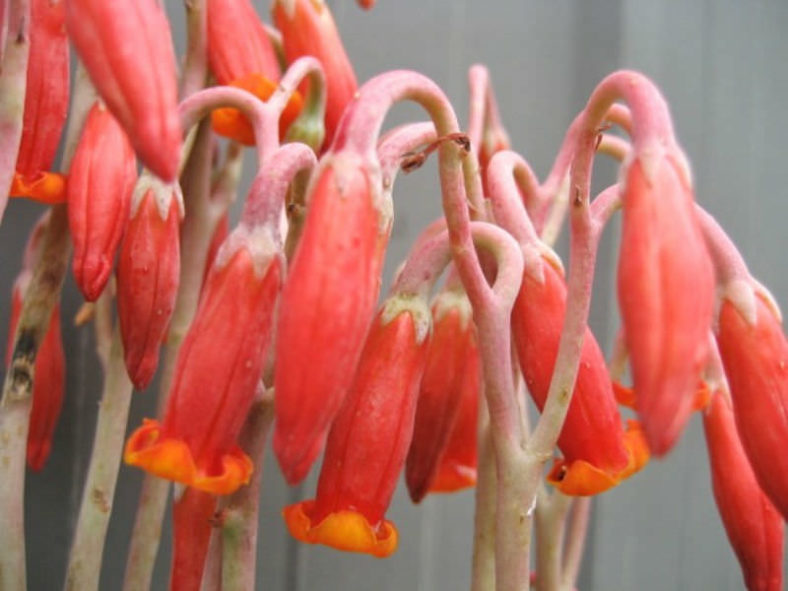Scientific Name
Adromischus phillipsiae (Marloth) Poelln.
Synonym(s)
Cotyledon phillipsiae
Scientific Classification
Family: Crassulaceae
Subfamily: Kalanchoideae
Genus: Adromischus
Etymology
The specific epithet "phillipsiae" (pronounced "fil-LIPS-ee-ay") honors Louise Jane Forbes Lort-Phillips (fl. 1894-1901), wife of British architect, explorer, and naturalist Ethelbert Lort-Phillips (1857-1943). She was a plant collector who accompanied her husband on expeditions in Somaliland around 1883-1895.
Origin
The native range of Adromischus phillipsiae extends from the Kamiesberg Mountains to Komsberg Pass and near Matjiesfontein in South Africa. It grows in sheltered rock crevices.
Description
Adromischus phillipsiae is a low-growing succulent with a tuberous rootstock, a short, erect stem, and spreading, soft branches bearing green to grey-green leaves. It can grow up to 2 inches (5 cm) tall, forming a small clump over time. The leaves are oblanceolate to elliptic with a channeled upper surface, measuring up to 1.8 inches (4.5 cm) in length and 0.5 inches (1.3 cm) in width.
The flowers are orange-red, cylindrical to slightly broadened from the middle, and can reach a length of 0.8 inches (2 cm). The inflorescence is a thyrse with several monochasia, each with 1 to 5 pendulous flowers.

Hardiness
USDA hardiness zones 9b to 11b: from 25°F (-3.9°C) to 50°F (10°C).
How to Grow and Care
Many species are easy to grow in any free-draining, gritty compost. Their compact habit allows a collection to be maintained in a small space, and they grow well on any sunny window ledge or the top shelf of the greenhouse. Water mostly from spring to fall, and let them dry out between waterings. Adromischus tolerates cool, frost-free conditions during the winter if kept dry. It is also well to keep water off the foliage during the winter. Mealybugs and vine weevils can be discouraged with a systemic insecticide.
Adromischus can be propagated from a single leaf, which should be placed against the pot's side so that the stem ends touch the compost. Some species drop their leaves easily, and although each leaf will form a new plant, growing a large specimen can be challenging. In other cases, leaves for propagation must be carefully detached with a sharp knife.
Learn more at How to Grow and Care for Adromischus.
Links
- Back to genus Adromischus
- Succupedia: Browse succulents by Scientific Name, Common Name, Genus, Family, USDA Hardiness Zone, Origin, or cacti by Genus
Photo Gallery
Click on a photo to see a larger version.


